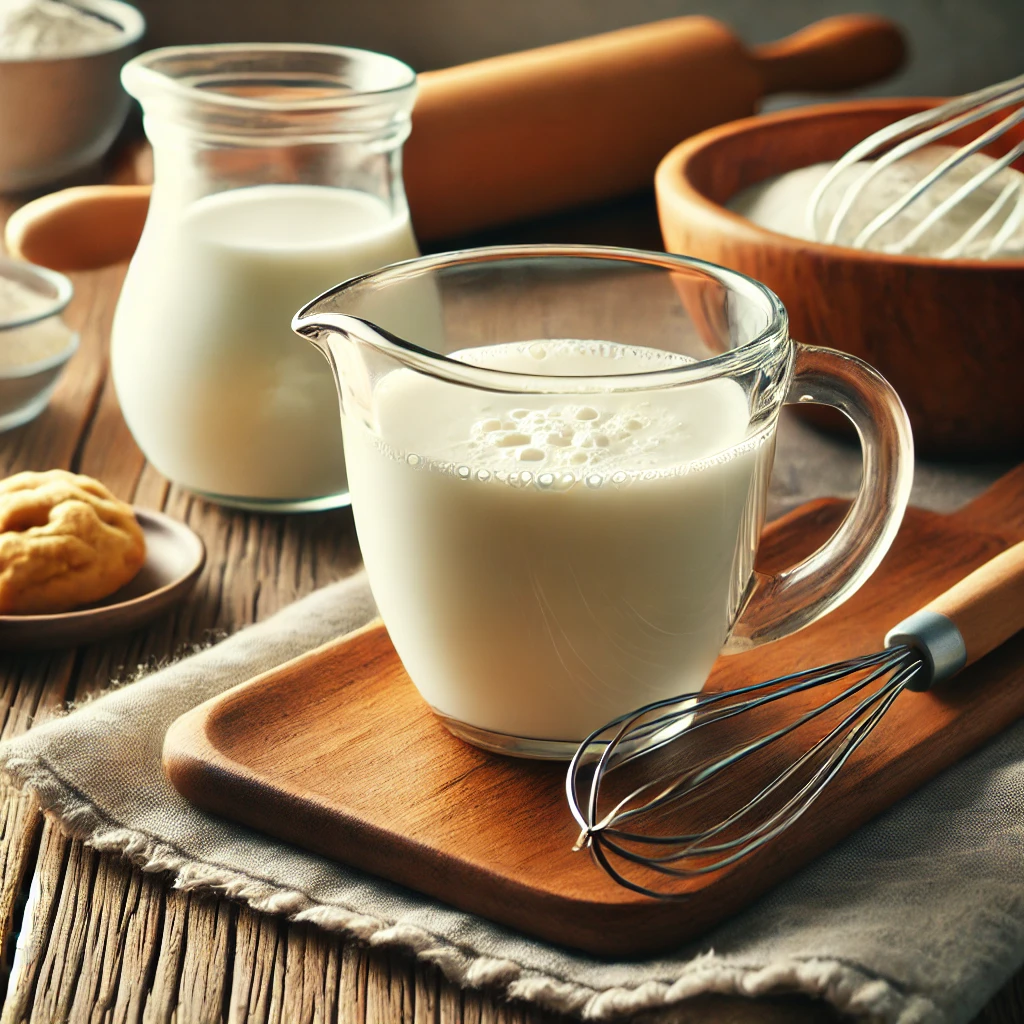Ingredients
Method
- Prepare the Acid: Add 1 tablespoon of white vinegar or lemon juice to a measuring cup.
- Add the Milk: Pour milk into the measuring cup until it reaches the 1-cup mark.
- Mix and Wait: Stir the mixture well and let it sit at room temperature for 5–10 minutes. You'll notice the milk will begin to curdle and thicken slightly, creating that classic buttermilk texture.
- Use Immediately or Store: Once the buttermilk is ready, use it in your recipe as needed. If you’re not using it right away, store it in the refrigerator for up to 3 days.
Notes
Recipe Notes for Homemade Buttermilk:
-
Milk Choice:
- Whole milk works best for a rich and creamy buttermilk texture.
- You can also use low-fat milk, but the result may be slightly thinner.
-
Acidic Ingredient Alternatives:
- If you don’t have white vinegar, substitute with lemon juice or even apple cider vinegar for a mild flavor.
- For a slightly tangy variation, plain yogurt or sour cream can be thinned with milk and used as a substitute.
-
Mixing Tips:
- Stir thoroughly to ensure the acid and milk combine evenly.
- Let the mixture sit undisturbed for 5-10 minutes to allow it to curdle properly.
-
Storage:
- Homemade buttermilk should be used immediately for the best results.
- If needed, it can be stored in the refrigerator for up to 3 days in an airtight container, but fresh is always better.
-
Scaling the Recipe:
- For larger quantities, maintain the ratio of 1 cup milk to 1 tablespoon of acidic ingredient.
- Adjust as needed for your baking or cooking needs.
-
Uses:
- Perfect for pancakes, biscuits, cakes, and marinades.
- Adds a tangy flavor and tender texture to baked goods.
-
Pro Tip:
- Shake the mixture lightly before using if it has been sitting for a while to redistribute the curdled bits evenly.
